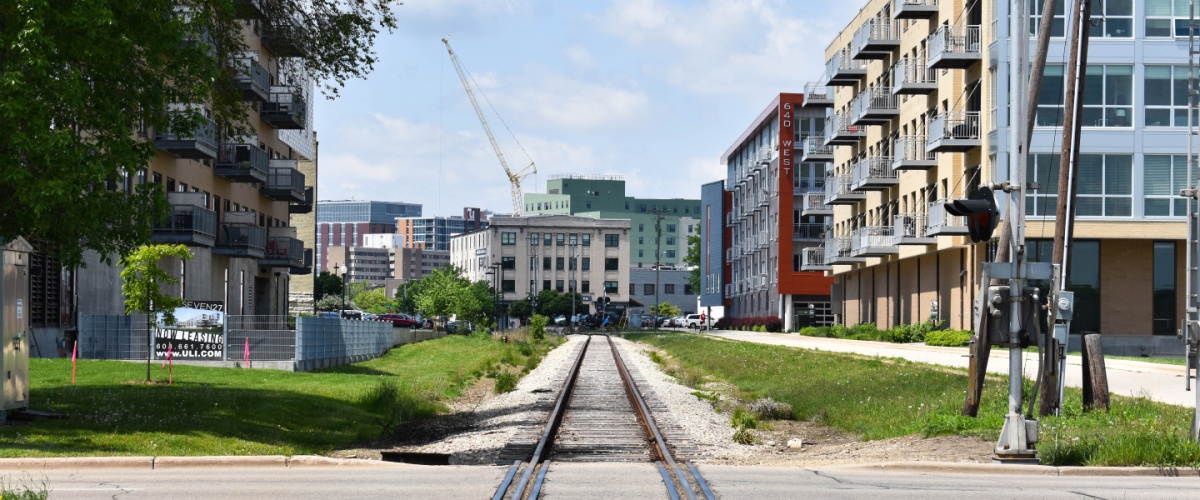
-
Building Inspection Counter Appointments
Building Inspection plan review and zoning review counters will be open to the public by appointment only.
Development Center Terminology
Conditional Use
These types of uses are not permitted outright by zoning ordinance, but may be allowed if certain standards and conditions are met and approved by the Plan Commission.
Comprehensive Plan
An officially adopted public document that establishes an urban development strategy and policies to guide the future growth and development of the community over the next several decades. The Plan provides the basis for making decisions regarding land use and the location of development, the extension of services and the placement of community facilities. As such, it is one of the primary tools used by the Madison Plan Commission, the Common Council, and the City administration in making decisions that affect the future of the community.
Developer
An individual, corporation, partnership, or entity that seeks to construct buildings or structures on a parcel of land, and includes all members of the development team (i.e. architects, planners, landscape architects, engineers, attorneys, etc.).
Development Guide
The Development Guide summarizes the processes that applicants must go through for each type of development approval in the City of Madison. It is available online, or by contacting City staff at (608) 266-4675.
Historic District
A geographic area, designated by ordinance, which possesses a historic character. Approvals in these districts will require review by the Landmarks Commission.
Impervious Paving
A hard surface material that does not absorb or retain water, and may contribute to run-off if not properly managed.
Infill Development
The development of vacant or underutilized lots that are surrounded by areas that are either partially or fully developed.
Mixed-Use Development
A building or structure with two or more uses. Such uses could include: residential, office, manufacturing, retail, public or entertainment uses.
Multi-Voting Process
An exercise to get participants to rank preferences for development concepts. This method allows people to quickly find consensus on general design principles.
Neighborhood Association
Recognized group of residents, property owners or other persons with fixed interests within a defined boundary, organized to discuss issues related to their community.
Neighborhood
An area with distinguishable characteristics, defined boundaries, and a common identity.
Neighborhood Planning Councils
Non-profit agencies that provide neighborhood supporting resources to member neighborhood associations, business coalitions, and at-large community members to organize and encourage citizen participation in civic activities within their boundaries.
Official Map
A legally adopted map that shows the location and width of existing and proposed streets, public facilities, parks, open space, and drainage rights-of-way.
Other Interested Parties
Individuals or groups who are not affiliated with established neighborhood organizations, but who might have an interest in particular development cases.
Permitted Use
When a development application conforms with the use(s) allowed by the Zoning Ordinance. A permitted use usually does not require additional review other than the zoning review for issuance of a building permit.
Planned Unit Development (PUD) and Planned Commercial Developments (PCD)
A zoning district that overlays the current zoning ordinance. A PUD or PCD may allow relief from the land use, building height, density, and setback normally required under conventional zoning in exchange for a superior design. Both PUDs and PCDs should reflect the purposes of their larger zoning district.
Policymaker
A member of one of the City boards or commissions, including the Common Council.
Public Right-of-Way
The Public Right-of-Way (ROW) includes all public streets, public sidewalks, and areas reserved for future streets, sidewalks, and public infrastructure. In many cases, the ROW also includes greenspace lying parallel to public streets and sidewalks. All land within the ROW, as well as the subsurface below and air space above it, is publicly owned and reserved for uses that do not conflict in any way with public safety or the public interest.
Urban Design District
There are six districts in Madison that require review by the Urban Design Commission. Applications within these districts must meet specified design criteria to ensure a cohesive aesthetic within the district.
Variance
Permission to depart from the requirements associated with a property through the Zoning Ordinance. Variances are granted only in cases where the existing zoning requirements place an undue hardship or practical difficulty on the property.
Verified Protest Petition
Individuals who wish to protest a proposed zoning map amendment may file a protest petition document before the Common Council meeting at which the proposed zoning map amendment will be considered. If enough residents in the area file a protest, the measure will need to be approved by three-fourths of the Common Council rather than the standard majority. Individuals wishing to file a protest petition should contact the Zoning Administrator at (608) 266-4551 for more information.
Zoning District
A designation placed on all properties in the city within which specifies zoning regulations governing the area, such as height, use, or other regulations.